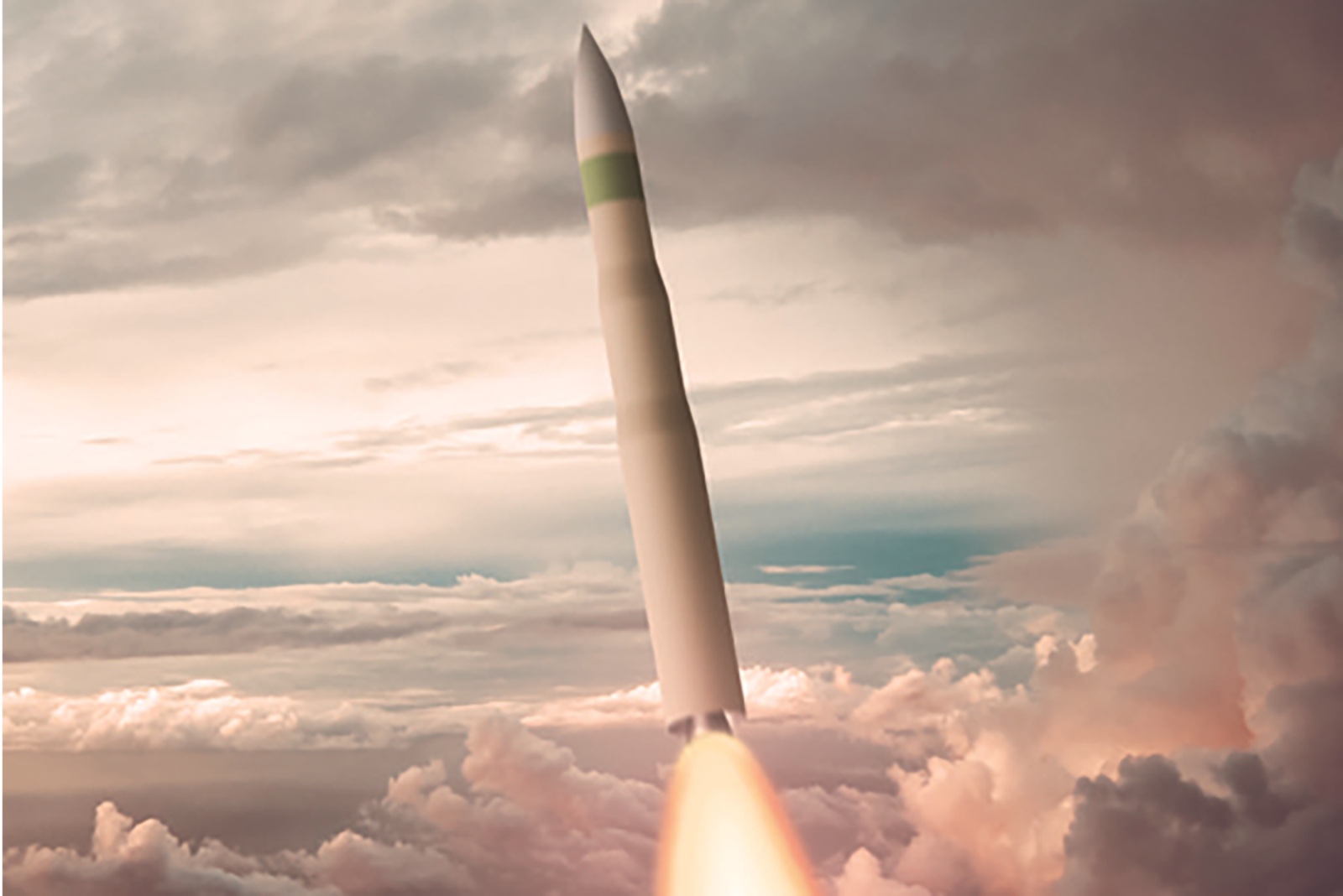The US Air Force’s new intercontinental ballistic missile program codenamed ‘Sentinel’ has run the risk of being terminated due to a massive cost overrun over the estimated US$96 billion.
US Hails F-35s Deadly Performance Against Hamas; Confirms Providing ‘Mission Data Files’ To Israel
One estimate puts the cost of the ICBMs and associated prices, including building silos, at 50% more than the present estimate of US$118 million made in 2020, which does not account for inflation. Theoretically, that would raise the price of the 659 missiles to about US$117 billion, Bloomberg reported.
Even while Congress mostly favors the initiative, growing expenses may activate sections of a 41-year-old statute that alerts lawmakers to problematic programs and compels the Pentagon to either explicitly restate the program’s justification or risk termination.
The US Air Force acquisition officials reportedly kickstarted a review after the Sentinel program office at Hill Air Force Base in Utah sent a “Program Deviation Report” to Air Force headquarters last week.
The service’s acquisition chief, Andrews Hunter, said, “New information has emerged about factors driving changes to important aspects of the program, from the cost of materials and labor for the design and time frame needed to build the launch facilities.”
“We’re in a different world now,” Hunted said when program costs and schedules were established as a baseline in August 2020. “Revisiting our assessments ensures senior leaders are equipped with updated information required to make decisions,” he said.
The Sentinel project, created and overseen by Northrop Grumman, aims to modernize all three of the nuclear weapons’ legs — air, land, and sea — partially in response to China’s nuclear weapons posture. It is anticipated to replace the Minuteman III missiles developed in the 1970s.
The cost overruns and uncertainty over the future of the Sentinel program come at a time when the threat from China’s expanding nuclear arsenal has become more significant than ever before. In its latest report on China, the Pentagon warned that China had been progressively working on ways to hit the continental United States.
The report noted that Beijing most likely finished building three additional missile site clusters in 2022, and these fields comprise at least 300 other silos for Intercontinental Ballistic Missiles (ICBMs).
“The PRC (People’s Republic of China) is developing new ICBMs that will significantly improve its nuclear-capable missile forces and will require increased nuclear warhead production, partially due to the introduction of multiple independently targetable reentry vehicle (MIRV) capabilities,” the Pentagon said in the report.
Despite being viewed as a crucial deterrent against China, any significant delay or rise in cost could give ammunition to proponents of arms control, including US Democratic Senator Elizabeth Warren, according to the report. Lawmakers like Warren have pushed for the termination of the Sentinel program to prolong the life of Minuteman III missiles.
The issue is whether the Sentinel program will end up costing more than it was projected to more than the ceilings set by a 1982 law. When program costs surpass the initial estimate by 15%, 25%, or even 50%, the Pentagon must notify Congress and provide a thorough justification.
The service released a statement stating that it will take approximately 45 days for the Air Force review to conclude and determine whether the ICBM development surpasses the legal cost thresholds. The Pentagon would likely need additional funding to meet the anticipated cost rise.
The enormous cost of building and transporting material to convert 450 Minuteman III missile launch stations from the Cold War era and 24 launch centers for Sentinel installation is one of the enormous obstacles.
Cost Rise Warning Was A Long Time Coming
In 2020, the Air Force gave Northrop a US$13.3 billion contract to build the Sentinel program, called the Ground Based Strategic Deterrent, or GBSD. The US Air Force replaced the aging LGM-30 Minuteman III intercontinental ballistic missile (ICBM) with the LGM-35A Sentinel ICBM.
The 400 Minuteman III ICBMs that have been in use for more than 50 years at the Air Force missile fields at F.E. Warren Air Force Base (AFB), Wyoming; Malmstrom AFB, Montana; and Minot AFB, North Dakota, will be replaced by the Sentinel ICBMs.
The Minuteman III ICBM’s current infrastructure, technologies, communication systems, and launch facilities will be updated and replaced to accommodate the new Sentinel weapon system. Sentinel will replace the Minuteman III program, which consists of 400 missiles spread over 450 silos and over 32,000 square miles.
According to the Senate Armed Services Committee’s fiscal 2024 budget report, this task is “estimated to last nearly ten years, will be a lengthy and complicated process involving real estate purchases, construction, deconstruction, removal and installation of equipment, and nuclear certification.”

Speaking at a Center for a New American Security think tank online event, USAF Secretary Frank Kendall stated he is “more nervous” about the LGM-35A Sentinel intercontinental ballistic missile than the B-21 Raider stealth bomber. Programs that “cannot fail” are the two initiatives being led by Northrop Grumman to modernize the Air Force’s two nuclear triad legs.
The enormous breadth of the Sentinel program, he noted, has been difficult. It encompasses civil engineering, real estate development, building communications and command-and-control infrastructure, and missile production.
“Sentinel is one of the most large, complex programs I’ve ever seen,” Kendall said. “It’s probably the biggest thing, in some ways, that the Air Force has ever taken on.”
According to Kendall, “unknown unknowns” are coming to light that the agency needs to address. These include infrastructure connected to command and control, such as the complexes that missileers would use to fire the Sentinel. At the time, he noted that the costs could accordingly increase.
Additionally, around June, the Government Accountability Office published a weapons assessment report detailing Sentinel’s issues, which would push back the system’s implementation from 2029 to sometime around April or June of 2030. GAO emphasized persistent shortages in staffing, problems with the supply chain, and software difficulties
- Contact the author at Sakshi.tiwari9555(at)gmail.com
- Follow EurAsian Times on Google News




